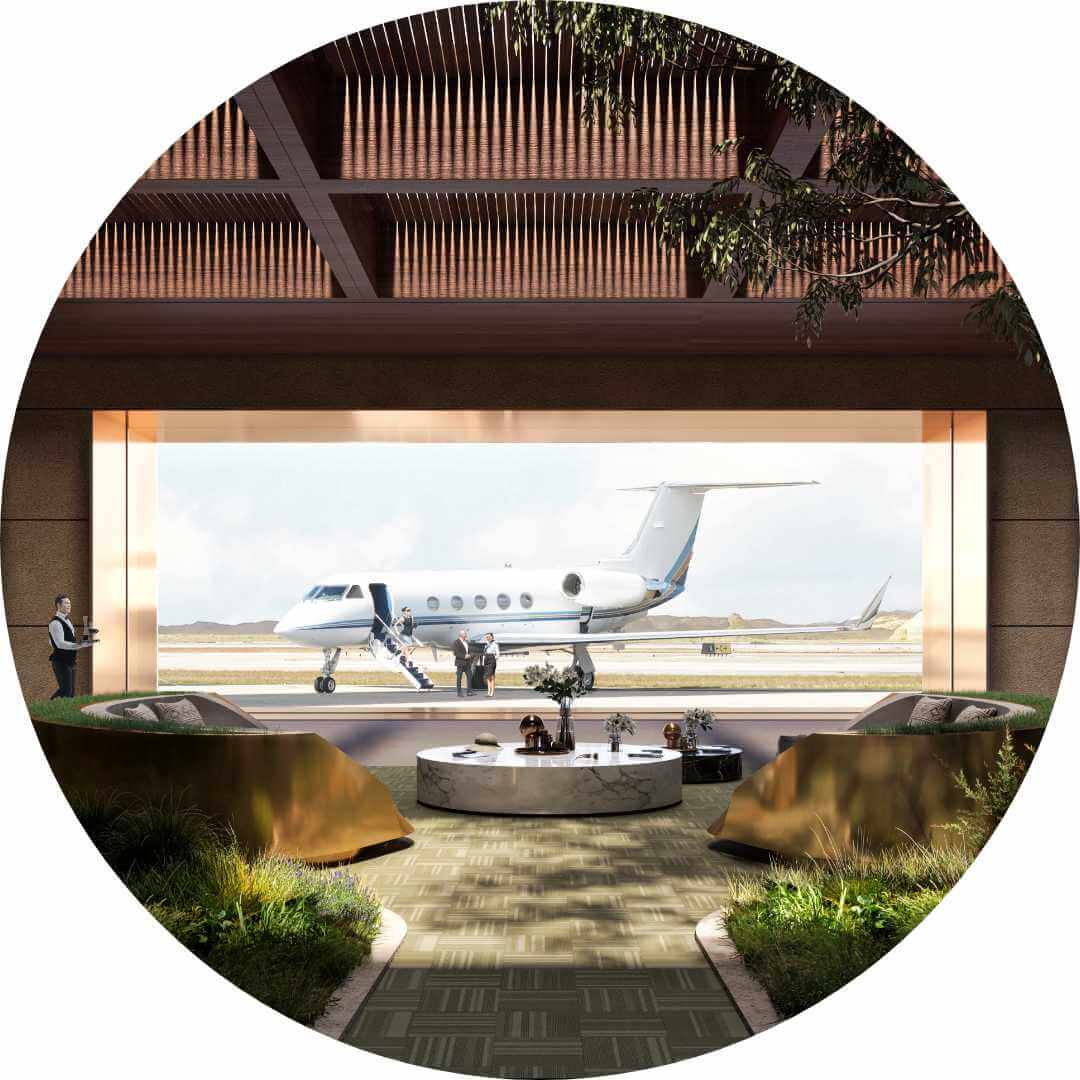To transform Saudi cities into global economic hubs, air travel is being placed at the heart of urban design
It is only possible to get a true sense of Saudi Arabia’s Vision 2030 from the air. Passengers flying in from Europe and Africa will bank in over the archipelago of The Red Sea, one of the world’s most ambitious regenerative-tourism projects, spanning an area roughly the size of Belgium. Those arriving from the east will pass over the largest shipyard in the world as they enter Saudi Arabia, and catch a glimpse of the ancient mud-brick walls of the historical city of Diriyah on their descent into Riyadh.
Saudi Vision 2030 is the economic diversification blueprint supported by the Public Investment Fund (PIF), which has an aviation strategy aiming to turn the country into a key global hub connecting Africa, Asia and Europe, with millions of people flying along these routes each year.
Accommodating this increase in traffic requires a more sustainable and efficient future of aviation. For Saudi Arabia, this starts on the ground. “We are not only creating an airport, we are creating a destination,” says Marco Mejia, Executive Director of the King Salman International Airport, a six-runway airport that is being built around Riyadh’s existing airport, which will also be part of KSIA.
Once built, the airport will span 57 sq km, encompassing existing terminals as well as new residential and recreational facilities, retail outlets and other logistics real estate, all powered by renewable energy.
This ‘aerotropolis’ model has been around for decades, but the technology to make it viable has not. Numerous critics have pointed out that people don’t want to spend time on a city’s periphery with the prospect of an arduous journey ahead of them. But with high-speed transport links bringing downtown Riyadh inside a 15-minute travel time, the King Salman International Airport is the first in a new generation of urban areas with aviation at their heart.
In this vision, the airport is not distinct from Riyadh but part of it, both physically and symbolically. “The airport is the first and last part of the city that visitors experience,” says Mejia. “So we are working with government agencies to create a cohesive ecosystem with the airport at its core.”
This is going to be a city within an airport with different areas for offices, entertainment and retail”
Marco Mejia, Executive Director of the King Salman International Airport

It will also serve as a jumping-off point for Saudi Arabia’s increasing international population; by 2030, the country will welcome a targeted 150mn visitors each year, all of them expecting fast and efficient transport links throughout their trip. In March, PIF announced the launch of the country’s new national carrier, Riyadh Air, which is expected to make its first commercial flight in early 2025. “There is huge demand for Saudi citizens to connect to the world,” says Riyadh Air CEO, Tony Douglas. “In particular Central Asia, the Indian subcontinent, the GCC and, of course, our domestic market.”
To cater for this demand, Riyadh Air in March said it had ordered up to 72 Boeing 787-9 Dreamliner airplanes, an unprecedented amount for a new airline, comprising 39 confirmed aircraft with an option for an additional 33. Each of these will not only offer greater fuel efficiency, lower CO2 emissions and less noise pollution than other planes, but also greater digital interaction with the wider world.
“Innovation and technology are key pillars of our airport development, especially when it comes to passengers’ journeys,” says Mejia. “We are collaborating with all different stakeholders to ensure that we elevate the journey, making it seamless and hassle-free. We also understand that the airport will be either a starting or connecting touchpoint for our passengers; therefore we will use digitalisation and technology to immerse them in their final destination while they are at our airport. We want them to feel the connection and perceive KSIA as a companion in their travels.”
As well as projecting Saudi Arabia’s vision for a more technologically enabled aviation industry, the new digital airline Riyadh Air will also drive growth in other areas of the economies, both domestically and abroad.
More than 600,000 people from over 141 different nationalities have applied to work at the company”
Tony Douglas, CEO of Riyadh Air

The financial sustainability of this expansion is key, however, and to support it PIF has launched AviLease, a Riyadh-based global aircraft-leasing company that gives airlines flexibility to rent planes and manage their fleet in response to demand. “We are looking at both passenger and air-freight capacity. We have already assembled a fleet of 167 commercial aircraft,” explains AviLease CEO Ted O’Byrne. “This helps increase connectivity into the Kingdom, providing businesses access to international markets, and to source or export goods more efficiently,” he adds.
Facilitating the fast shipment of cargo is an essential part of Saudi Arabia’s blueprint for the future of aviation. By 2050, the King Salman International Airport – which will have a phased opening – is expected to handle 3.5mn tonnes of cargo per year; developing an infrastructure that can distribute these goods efficiently is essential to supporting businesses throughout the country.
Saudi Arabia’s economy has always relied on the consistent flow of trade and tourism, with Jeddah a vital port along the ancient silk road that connected Chinese and European trade. Today, investment in aviation is seen as crucial for the country’s evolution into a modern global hub.
PIF is not only developing an airport that can support trade between east and west, but an aviation industry that can drive the expansion of domestic and international businesses. Some of these companies rely on the footfall of an increasing number of international tourists, while others take advantage of advanced manufacturing and shipping capabilities; but all of them rely on aviation in some shape or form.
Supporting such businesses requires a bold vision for the future of aviation. The aerotropolis model being driven by the King Salman International Airport literally places flight at the centre of Riyadh’s economic growth, but it also buttresses PIF’s contribution to plans to push the capital into the world’s top 10 city economies.
The scale of this vision proves that PIF’s investment in aviation is not just part of the journey towards realising Vision 2030: it is the economic engine accelerating the entire country towards it.






